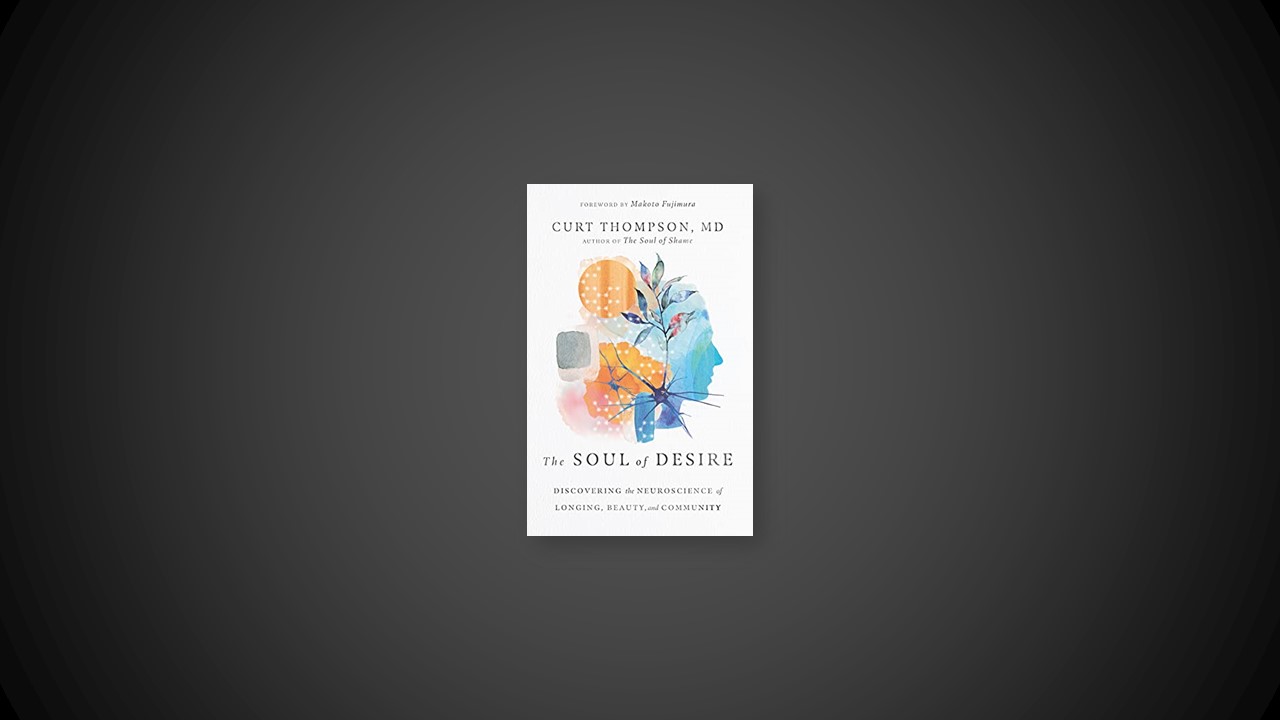Desire: A People of Longing
We are people of desire. We want things. We long for things. It is primal to our nature to yearn. As Saint Augustine reflected, “The whole life of the good Christian is a holy longing. . . . That is our life, to be trained by longing.”
We have been at it as a race for as long as we have been on the planet. We begin at birth with our embodied desires for breath, nourishment, warmth, and physical security. These are linked to an emotional desire for nurture that begins in childhood, extends through adulthood, and is mediated both interpersonally and neurobiologically—that is, it is felt, sensed, and acted on in our relationships with others and within our own brains. These early longings form the hard deck upon which others stand as a child matures. It doesn’t take much to see the breadth of our desire (we modernists want a lot, both significant and trivial) or the depth of our desire—although the true nature of this is often outside our conscious understanding.
to be seen, soothed, safe, and secure are necessary states of mind in our discovery of desire and in the setting of limits that channel desire into patterns of beauty and goodness. But the unhealed tracts of our soul’s landscape, those that still wait to experience one or more of the four s’s, distract us from or blind us to our longing. Our desire can become muted under the fear of relational affliction or misdirected in our attempt to cope with the pain of trauma. We do not nullify desire; we merely regulate it. We may try to redirect its course or seek to contain it, but we cannot extinguish it. For God has made us with desire for connection that ultimately leads to the co-creation of objects of goodness and beauty with him and others with whom we have difference, be it great or small.
This is as powerful and inevitable as gravity or the pull of the tides. We cannot overcome it.
Beauty: Desire Made Manifest
It is virtually impossible for us to imagine our pathos and affliction in the moment as beauty in the making. And evil has every intention of preventing us from seeing it that way. Who among us, when contemplating the mistreatment we’ve suffered in church or the barrenness and brutality of a home fraught with addiction, can imagine beauty emerging from the very places where trauma hides? But Jesus has plans for exactly that—plans we find impossible to imagine on our own but that are more possible to comprehend as we permit ourselves to be seen by others in our vulnerability. Plans for new creation.
Evil seeks to devour beauty at every turn, and it does so by wielding the traumatic experience of shame as its primary weapon. One of the most obvious results of its work in the world is the way in which our imaginations are wounded, stunted, and anesthetized. We will see shortly how this is embodied in the activity of the brain, but suffice to say it is our fear of repeating the experience of shame and trauma from our past that leads to the atrophy of our imaginations.
Imagine That: Looking at What We Don’t Yet See
Certainly many of us long to imagine our lives being different than they are. Realizing those imagined changes is easier for some than for others. For victims of emotional trauma, their traumatic experience doesn’t just shatter their memory of the past; it atrophies their ability to imagine a future that is anything but harrowing. And so they don’t. At least not without the embodied assistance of a cloud of witnesses whose words and presence support them in that process.
Human flourishing, then, is about our being able to imagine in embodied form the new creation, the new works of art, that God is creating in, through, and with us. Being joyfully known enables our imagination to expand because it has for so long been truncated by the interpersonal and neurobiological features of shame, fear, and disintegrating behavior—our sin. Being known in the context of the gospel of Jesus changes all of this, not just because we receive new information, as important as that is, but because we are received into the presence and work of the Holy Spirit within the body of Christ.
Even so, evil has every intention of subverting and devouring any and all goodness and beauty, and our complicity with it as it runs right through the center of each of us leads not only to our problems but to our apprehending our condition in the manner we do: we are problems to solve rather than artistic endeavors waiting to be sung, sculpted, painted, and written. Hence, we need help that enables our imaginations to extend beyond where our shame and fear keep them imprisoned.
Our discouragement and even despair about such things are, more than anything else, deeply dependent on the degree to which our minds and hearts are living in isolation. Becoming deeply known, living interpersonally integrated lives, enables us to persevere in the face of all that tells us not to, to “will one thing” in order to see the beauty of the pure in heart emerge.
to see God in places and ways that heretofore we could not (Matthew 5:8).
see God in places and ways that heretofore we could not (Matthew 5:8).
Perseverance is not easy, but it is necessary. And anyone in a community on the way to creating beauty must be committed to it from the start.
Practicing for Heaven: A People of Beauty
Beauty is something to which artists draw our attention, but its locale is not limited to art, nature, or religious experience. It is ubiquitous if we have eyes to see it, emerging in the context of our desire and grief, our longings and our trauma and shame. Moreover, it is something we are called to create in whatever domain of life we occupy. In the confessional communities, beauty not only emerges in the groups themselves; it also becomes something members create in their lives outside the community as a direct result of the work they do there.
And this beauty, necessarily, in God’s economy is always a herald of justice. Justice not least in all the realms of human existence that have anything to do with money, sex, or power. Justice that is the evidence of God putting things right. Hence, as much as this work includes the question of where are you anticipating that you will create beauty in your school? Your law practice? Your accounting firm? Your farming? Your composition of music? Your parenting? Your microfinance venture?—it also includes the question of how are we looking to create beauty in our deepest places of systemic and institutional trauma? The list is endless of how and where what we do in confessional communities becomes what we do in all domains of our lives—and in each composition, justice is what will follow in its wake.
In any creative endeavor we undertake, in every nook and cranny of life we occupy, naming our longings and griefs (and developing a practice of hopeful lament for what it means to live in between them both) paves the way for beauty to emerge in the presence of our trauma and shame. This means, practically, that no matter what venture we aspire to, beauty is waiting for us. Of course, typically there are no trained psychotherapists in charge of the long-term work in other vocational domains, but there are basic methods of practice that can be put into place that generally follow the ideas highlighted in this book.


